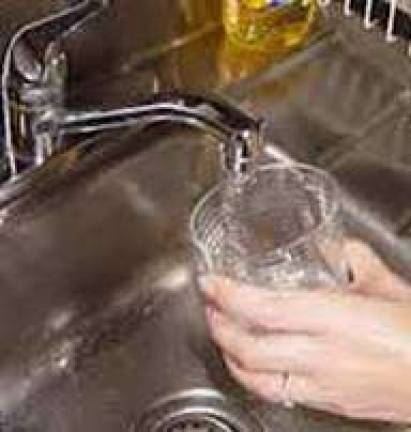Drought watch continues in Sussex County

With no end in sight for the end of the drought watch in Sussex and Warren counties, the Department of Environmental Protection is considering a much stronger designation -- a drought warning -- for much of the rest of the state. The agency has scheduled a public hearing for Oct. 20 to discuss that dssignation for a large portion of southern New Jersey. The DEP says designating a formal drought warning for 12 counties in the northeastern, central and northern coastal regions will enable it to work with suppliers to balance storage among reservoir systems.
The hearing is scheduled for 10 a.m. at the Millburn Free Public Library, 200 Glen Ave., Millburn, Essex County.It is a required step prior to the DEP issuing formal drought warning measures for the following counties: Bergen, Essex, Hudson, Hunterdon, Mercer, Middlesex, Monmouth, Morris, Ocean, Passaic, Somerset and Union.
In addition, the DEP issued a drought watch for Burlington, Camden, Gloucester, Monmouth, Ocean and Salem counties and has continued a drought watch in Sussex and Warren counties that has been in effect since July. The designation of a watch formally urges residents of these counties to voluntarily conserve water.
"The recent rainfall we received, while spanning several days, was not enough to reverse downward trends in our water supplies due to extended dry weather patterns over most the year," DEP Commissioner Bob Martin said. "It is very important for residents and businesses across New Jersey to voluntarily conserve water, especially regarding non-essential water use, such as watering lawns and landscaping, until we get sufficient rainfall to replenish supplies."
A drought warning, which could officially take effect shortly after the hearing unless more abundant rainfall occurs, will establish a formal process for the DEP to work with suppliers to ensure no region faces a significant shortfall should dry weather and high customer demand continue. The goal is to avert a drought emergency declaration, which would necessitate mandatory restrictions on water use by the public.
On July 25, the DEP had issued a drought watch for Bergen, Essex, Hudson, Hunterdon, Mercer, Middlesex, Morris, Passaic, Somerset, Sussex, Union and Warren counties.
The DEP utilizes a number of indicators to gauge the impacts lack of precipitation has on water supplies, including reservoir levels, stream flows, and levels in shallow groundwater sources, also known as unconfined aquifers.
Reservoir systems in the northeastern and northern coastal parts of the state have been grappling with below-normal precipitation for much of the year. Reservoir storage typically declines at this time of year due to heavy usage and normal summer weather patterns.
The southwestern part of the state -- Burlington, Camden, Gloucester and Salem counties -- relies primarily on groundwater. Stream flows and groundwater are rated as severely dry under indicators utilized by the DEP in this area. Sussex and Warren counties also rely largely on groundwater. Stream flow and shallow groundwater in these counties are rated as severely dry, while precipitation is rated as moderately dry.
How to conserve
The DEP offers the following tips to reduce water use:
* At this time, it is appropriate to just let your lawns go dormant. If you decided to water lawns, do so sparingly. Two times per week for 20 minutes is sufficient.
* Use a hose with a hand-held nozzle to water flowers and shrubs.
* Avoid watering lawns and plants during the heat of the day, since much of this water will evaporate without helping the lawn.
* Use a broom to sweep the sidewalk, rather than a hose.
* To save water at home, fix leaky faucets and pipes. Consider replacing your toilet with a low-flow version; this can save around 11,000 gallons per year.
* Turn off the faucet while brushing teeth and shaving.
* Run washing machines and dishwashers only when full.
* Upgrade your showerhead to low-flow versions; they can save some 7,700 gallons per year.
* Upgrade your faucets or install faucet aerators; this can save some 16,000 gallons per year.